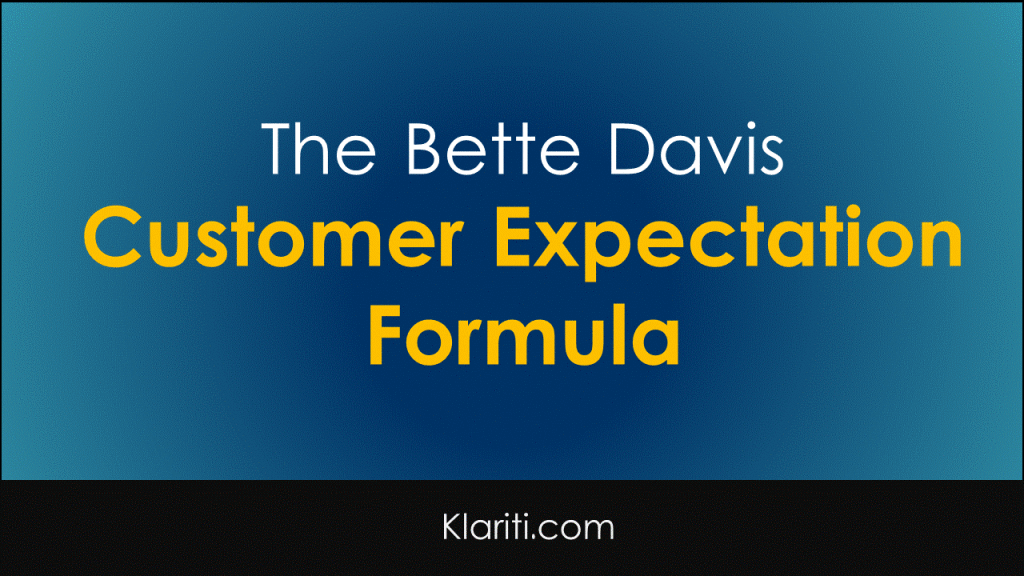Business Writing
The Bette Davis Customer Expectation Formula
Bette Davis, the actress, had a habit of repeating back to Directors exactly what they asked her to do.
She explained in her biography that she did this to confirm her understanding.
Some directors thought she was pushy, difficult as a result. And she was. But she wanted to be sure, and that there was no assumptions on either part. Then she’d do here lines.
Most of us wouldn’t.
Instead, we’d say our lines and hope we got it right.
So, if Bette Davis wasn’t afraid to get clarification, why should you?
Ever heard a new customer begin to say this?
“That’s not what I was expecting…”
It’s not something you want to hear from customers.
There shouldn’t be any expectations.
Expectations imply assumptions.
What the customer is saying, in a roundabout way, is,
“My idea of what you’d be giving me is different from what’s in front of me. Please try again.”
Maybe they don’t even say please.
Let’s unpack this.
It’s about customer expectations.
Customers imagine how something will be designed if you don’t clarify what you plan to make.
Actually, that’s not true. Maybe you did.
But, here’s the problem.
Did they acknowledge it?
When you left the meeting were you 1000% sure you knew of what you had to build?
Were they 1000% clear on what they were getting?
How did you confirm this?
If you didn’t get cast iron confirmation, don’t leave the meeting until you both agree – exactly – on what will be delivered.
This may make you uncomfortable. You don’t want to seem pushy, especially if it’s a new client.
But what will happen if you don’t?
You’ll spend days, weeks, or more designing, coding, writing and it will never hit the mark.
How can we avoid this?
If you’re building a product, follow these steps:
- Create a product matrix in Excel.
- List what is in scope.
- List what is out of scope.
- Prioritise each feature as High, Medium, or Low.
- Assign each feature to a delivery date.
- Describe each feature as exactly as possible.
- Assign a status to each feature, such as in development, in review, finished.
Next, get your client to read this either with you or over a Skype call.
Your aim is to make sure there is no ambiguity.
Once you iron out ‘assumptions’ you can work on your product knowing that you won’t get ambushed with expectations.

